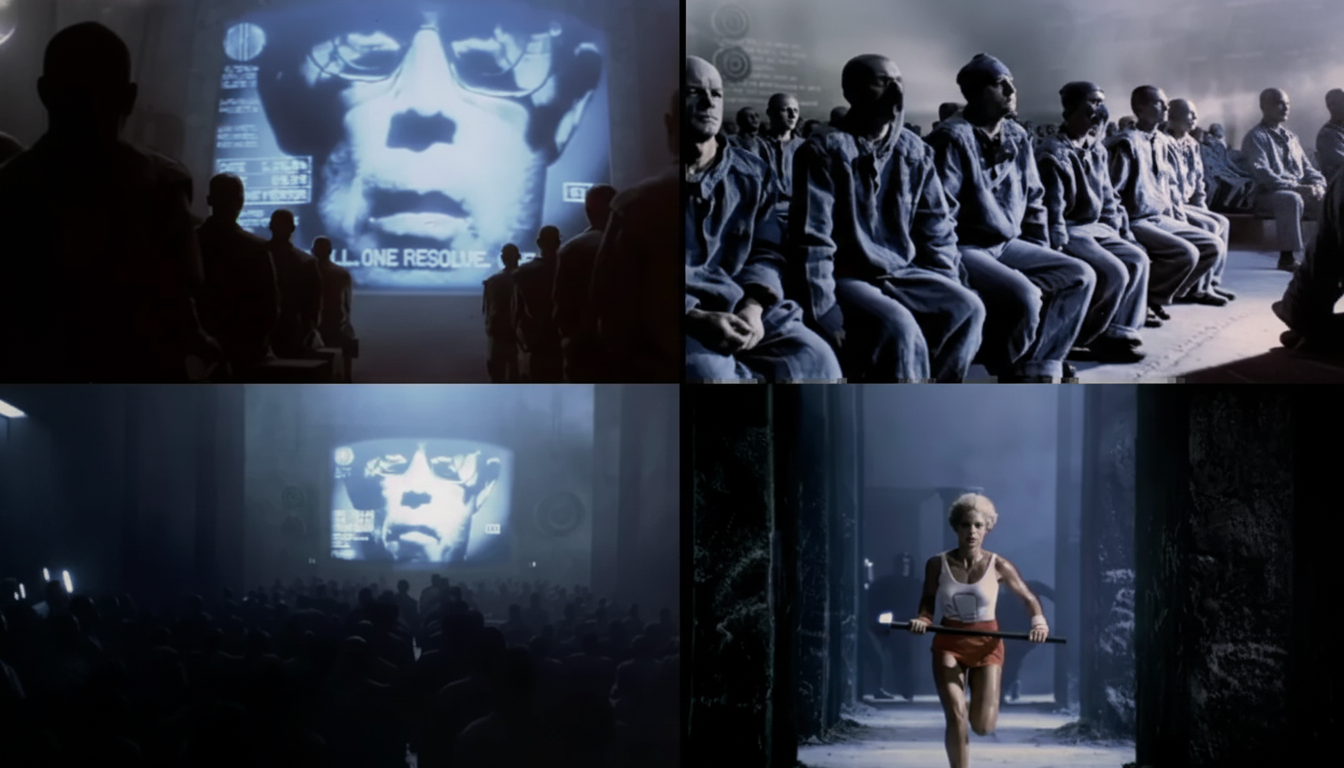On Jan. 22, 1984, Apple showed a commercial that would become one of the best-remembered ads in television history. And simply called “1984,” it debuted the first Macintosh computer during Super Bowl XVIII and established Apple as an insurgent in the face of the conformity that had come to dominate the computer world.
Twenty years later, the ad was still a cultural landmark, admired by experts in marketing, Apple enthusiasts and anyone who loves a little bold storytelling.

The Concept of 1984
The ad was heavily influenced by the George Orwell novel 1984. In the commercial, a pack of brainwashed robots in uniforms gaze idiotically at a gigantic video screen with Big Brother airing propaganda. Immediately, a single superheroine dressed in glossy athletic gear enters with a hammer and starts smashing the screen. The moment serves as a metaphor: Apple usurping the position of IBM, the dominant computing force of the era.
As the screen explodes, a voiceover says:
“On January 24th, Apple Computer will introduce Macintosh. And you’ll see why 1984 will not be like ‘1984.’ “
A Risky Move
Not everyone at Apple was immediately convinced. Board members who were shown the ad prior to the Super Bowl had a variety of reactions.
John Sculley, Apple’s chief executive at the time, remembered the uncomfortable silence: “At the end of the screening there was a stunned silence. Two members put their heads in their hands and said, ‘You’re not actually going to run that thing, are you?’ ”
The ad almost never aired. But Apple’s marketing team, including Steve Jobs and its advertising partner, Chiat/Day, pressed on thinking it would be historic.

The Super Bowl Premiere
“1984” ran nationally only once — during Super Bowl XVIII on Jan. 22, 1984. It instantly captured attention. The viewers had never seen anything like it. Indeed, the ad was so memorable that a lot of people were still discussing it long after the game was over.
It was more than just an ad for a product — it was an emblem of Apple’s worldview, of industry-defying innovation, of its war against the status quo and its love for the underdog and the dreamer who risked being crushed by the establishment if they dared critique it.
Legacy of the Ad
Twenty years after its debut in 1984, “1984” was still being commemorated as one of the best commercials of all time. It was an unprecedented instant of marketing, rewriting the way companies thought about their advertising. Rather than just selling features, Apple sold a dream.
Today the ad is scrutinized at business schools, celebrated in ad circles and cherished by Apple fans as a watershed moment in the company’s history. It’s a still proof that daring gambles can pay off — and that a single 60-second spot can remake an industry’s image.
Final Thought
Apple’s “1984” commercial wasn’t simply an ad — it was a cultural statement. What started as a risky concept turned into a landmark in the history of advertising and technology. Twenty years later, it remained standing high as an emblem of creativity, bravery and the power of storytelling.

